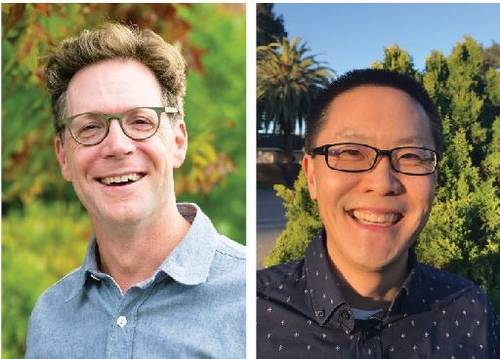February Clergy / President's Column by President Andy Cheng
 An Update on Our 5781 Strategic Priorities
An Update on Our 5781 Strategic Priorities
Part III: Racial Equity and Justice
This past summer, the Board of Directors and the Program Team announced three, strategic priorities for our congregation during the year 5781: Racial Justice and Equity; Youth Education; and Learning from our Present to Design Our Future, as well as attainable, one-year goals in each of these areas. We chose to determine strategic priorities in order to:
- Create robust and clear partnerships between Beth Am’s Professional Team and its Board
- Focus our joint leadership efforts in three key strategic areas that will strengthen our congregation in the areas of membership and engagement
- Align our efforts for 5781 with the congregational findings that informed its search and selection of a new senior rabbi
- Move towards a financially stable future with a sustainable income stream and an affordable operating model.
In this third of three, jointly written Builder columns, we offer an explanation for the importance of the strategic priority that we have titled, Our Sanctuary for Imperfect Practice: Racial Equity and Justice (REJ), and give you an update on our progress as we enter the second half of of our program year. This initiative is led by our co-chairs, Donnovan Somera Yisrael and Rebecca Altamirano, and by Rabbi Sarah Weissman.
Why are we focused on this particular priority right now? In the Torah, we are taught to accept others without prejudice or bias (Leviticus 19:17-18). Many of you may remember stories of Rabbi Emeritus Sidney Akselrad (z”l) marching with Dr. Martin Luther King, Jr. decades ago. While Congregation Beth Am’s commitment to achieving racial equity and justice is not new, our community joins the Union of Reform Judaism (URJ) and the Religious Action Center (RAC) to continue working together across lines of difference to take action against structural racism that is embedded in our American society, and to advance justice for all people, regardless of race or ethnicity.
You may also remember The Curb-Cut Effect, an illustration of how laws and programs designed to benefit vulnerable groups, such as the disabled, often end up benefiting all. If we can disable racism, then we can also break other forms of discrimination like anti-Semitism, agism, sexism and homophobia. We fight for one, we fight for all.
Moreover, we seek to ensure that Beth Am reflects and incorporates the ever-growing diversity of the Reform Jewish community, particularly within the Bay Area. Jews have lived all around the world for a millennia, and American Jews are an increasingly multi-racial and cultural ethnic group (Institute for Jewish & Community Research). According to A Portrait of Bay Area Jewish Life and Communities, a study commissioned by The Jewish Community Federation, 25% of Bay Area Jewish households include a respondent or spouse who is Hispanic, Asian-American, African-American or of mixed or other ethnic or racial background. Furthermore, the last U.S. census shows that multiracial children are the fastest growing youth group in the country, so Millennials and Gen Z will be even more diverse. In order for Judaism to remain relevant in the 21st century, the next generation needs to see that our community is embracing the full diversity of our people and engaged in issues that are important to their identity and their values.
For all these reasons, we are living in a high-stakes and high-leverage moment in our country.
What are our three goals for this priority?
- Seek out congregants of color from Beth Am and enlist them in efforts to build awareness and a culture of community so they, too, will become leaders and owners of Beth Am’s present and future. This past fall, we established Congregation Beth Am’s Racial Equity and Justice Committee, and we’re grateful for all the work they’ve done.
- Provide our congregants and staff with sufficient opportunities to learn, reflect and acknowledge our individual and communal shortcomings with regard to racial equity. Beth Am has offered a variety of programs including events this month. To learn more, see page 8 of this issue or visit our webpage, Working for Racial Justice: Upcoming Opportunities for Learning and Reflection. If you’re interested in learning more on your own, check out the URJ's racial justice media list resources for Reform Jews.
- Create a specific organizing effort to “move the dial” on racial justice in the broader community. More to come in this area.
We look forward to continuing this important dialogue with the Beth Am community.
L'shalom,


Rabbi Jeremy S. Morrison Andy Cheng, Beth Am President

 We strive to live as a holy community whose study and practice of Judaism inspires and challenges us to "do justice, to love kindness and to walk humbly with our God" (Micah 6:8).
We strive to live as a holy community whose study and practice of Judaism inspires and challenges us to "do justice, to love kindness and to walk humbly with our God" (Micah 6:8).